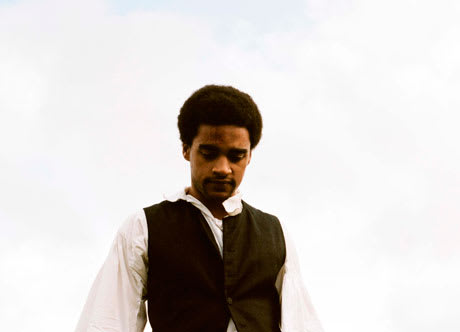Removing the framing device and epilogue of Wuthering Heights (Emily Brontë's stark and unnervingly cruel ode to emotional turbulence and unhealthy passions), grittily realist director Andrea Arnold has taken the title and themes to heart, ripping away all the lace and niceties associated with previous cinematic renditions, leaving us with an unsettling portrait of a renowned text.
While not particularly compelling to watch, being a dry experiment in stripping away our collective idealizing of the past, it does disturb and inspire consideration, providing a thoughtful look at what living conditions must have been like in the late 1700s.
Much of the core story remains intact, despite Heathcliff (James Howson/Solomon Glave) being black rather than a gypsy, with the brooding, wilful orphan being adopted by Mr. Earnshaw (Paul Hilton), much to the chagrin of his jealous son, Hindley (Lee Shaw). His daughter, Catherine (Kaya Scodelario/Shannon Beer), on the other hand, develops an immediate attachment to the boy, striking up a teen romance heightened by isolation and increasingly challenging circumstances.
Instead of focusing on the flowery aspects of the love story, Arnold takes care to explore her environment, lighting everything with candles and sunlight only, capturing just how cold, wet and muddy the washed-out, grey landscape was. She also makes the characters somewhat animalistic and sinister, as the novel implies, featuring bloodsucking and wound licking on the part of Catherine and some exceedingly discomforting and vivid animal abuse and slaughter by Heathcliff.
And since there's no score, opulent costumes or powerful slow motion looks of desire, we're left mostly with excess scenes of people trudging through the mud and treating each other like crap, especially later on when Heathcliff decides to marry the sister of Catherine's husband, Isabella (Nichola Burley), just to spite her.
Because the material is handled with such harsh realism, including use of the word "cunt," which was apparently quite common between the 13th and 18th centuries – it's impossible to identify with any of the characters, who are all grotesque in varying ways.
This pares the film down to a cold exercise in text deconstruction, which is interesting, but becomes extremely grating somewhere around the second hour.
(Film 4)While not particularly compelling to watch, being a dry experiment in stripping away our collective idealizing of the past, it does disturb and inspire consideration, providing a thoughtful look at what living conditions must have been like in the late 1700s.
Much of the core story remains intact, despite Heathcliff (James Howson/Solomon Glave) being black rather than a gypsy, with the brooding, wilful orphan being adopted by Mr. Earnshaw (Paul Hilton), much to the chagrin of his jealous son, Hindley (Lee Shaw). His daughter, Catherine (Kaya Scodelario/Shannon Beer), on the other hand, develops an immediate attachment to the boy, striking up a teen romance heightened by isolation and increasingly challenging circumstances.
Instead of focusing on the flowery aspects of the love story, Arnold takes care to explore her environment, lighting everything with candles and sunlight only, capturing just how cold, wet and muddy the washed-out, grey landscape was. She also makes the characters somewhat animalistic and sinister, as the novel implies, featuring bloodsucking and wound licking on the part of Catherine and some exceedingly discomforting and vivid animal abuse and slaughter by Heathcliff.
And since there's no score, opulent costumes or powerful slow motion looks of desire, we're left mostly with excess scenes of people trudging through the mud and treating each other like crap, especially later on when Heathcliff decides to marry the sister of Catherine's husband, Isabella (Nichola Burley), just to spite her.
Because the material is handled with such harsh realism, including use of the word "cunt," which was apparently quite common between the 13th and 18th centuries – it's impossible to identify with any of the characters, who are all grotesque in varying ways.
This pares the film down to a cold exercise in text deconstruction, which is interesting, but becomes extremely grating somewhere around the second hour.
